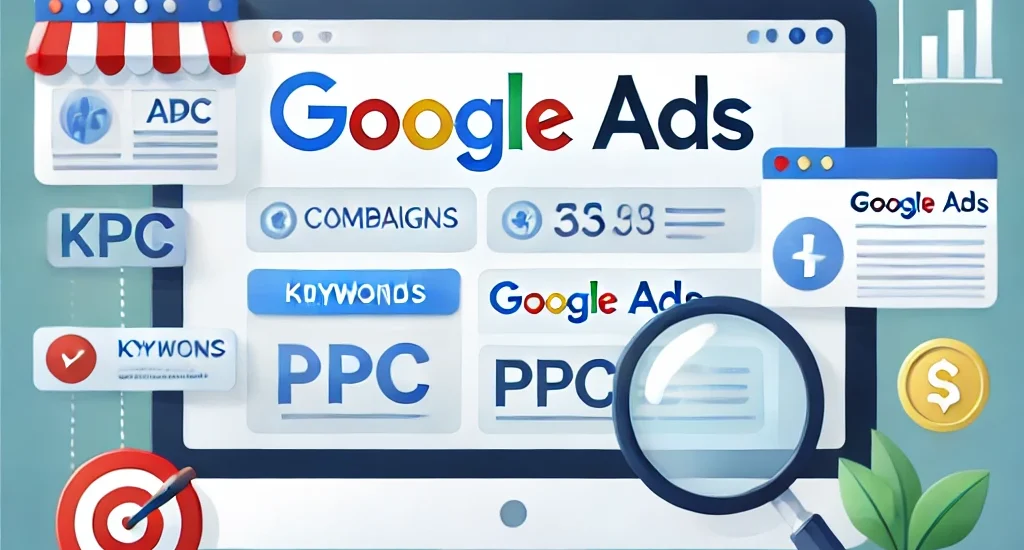In today’s competitive digital world, driving traffic to your blog can be a challenging task. Bloggers, whether beginners or experienced, are always looking for effective ways to boost visibility and reach their target audience. One powerful tool that has proven its worth time and again is Google Ads. If you’re looking to scale up your blog’s traffic, increase audience engagement, or monetize your content effectively, Google Ads is a must-have in your blogging toolkit.
This guide will explain Google Ads how it works and why it matters for bloggers like you.
Table of Contents
What Is Google Ads?
Google Ads is an online advertising platform created by Google. It allows advertisers to display ads on Google Search, YouTube, and other websites within Google’s Display Network. With Google Ads, advertisers can reach people actively searching for their products or services, or browsing content related to their business.
For bloggers, this means you can create ads that promote your blog posts, target the right audience, and attract readers who are genuinely interested in your niche.
How Google Ads Works: The Basics
At its core, Google Ads how it works on a pay-per-click (PPC) model. This means you pay Google each time someone clicks on your ad. The cost of these clicks varies based on competition, keywords, and audience targeting. Here’s a step-by-step breakdown of how Google Ads works:
1. Keyword Research and Selection
The foundation of any Google Ads campaign is selecting the right keywords. Keywords are the words or phrases that users type into Google when searching for something.
- As a blogger, identify keywords related to your blog post topics. For example, if you write about “budget travel tips,” target keywords like “cheap travel destinations” or “affordable travel hacks.”
- Google’s Keyword Planner tool can help you find relevant keywords and analyze their competition and cost.
2. Creating Your Ad Campaign
Once you have your keywords, you’ll create a Google Ads campaign. There are different campaign types available:
- Search Campaigns: Ads appear on Google’s search results when users type relevant queries.
- Display Campaigns: Visual banner ads appear on websites within Google’s Display Network.
- Video Campaigns: Ads play on YouTube and other video platforms.
- App Campaigns: Ads drive users to install apps.
For bloggers, Search Campaigns and Display Campaigns are the most effective ways to promote content.
3. Writing Your Ads
Writing compelling ad copy is critical to getting users to click. Keep these tips in mind:
- Use attention-grabbing headlines that resonate with your audience’s search intent.
- Include keywords naturally in your ad copy.
- Highlight what makes your blog unique (e.g., “Top 10 Budget Travel Hacks You Need to Know”).
- Add a strong Call-to-Action (CTA) like “Read More” or “Discover Now.”
4. Setting Your Budget
Google Ads allows you to set a daily budget to control how much you spend. For bloggers starting out, you can begin with a small budget and increase it as you see results.
- Use Cost-Per-Click (CPC) bidding, where you only pay for actual clicks.
- Monitor your Max CPC (the highest amount you’re willing to pay per click).
5. Targeting the Right Audience
Google Ads offers advanced targeting options to ensure your ads reach the right audience:
- Location Targeting: Show ads to users in specific cities or countries.
- Demographic Targeting: Target users based on age, gender, or interests.
- Topic and Interest Targeting: Focus on people interested in your blog’s niche, such as travel, food, tech, or lifestyle.
6. Monitoring and Optimizing Your Ads
Once your ads are live, you need to monitor their performance using Google Ads Dashboard. Key metrics to track include:
- Impressions: How many times your ad was seen.
- Clicks: The number of times users clicked your ad.
- Click-Through Rate (CTR): The ratio of clicks to impressions.
- Cost-Per-Click (CPC): How much you’re paying per click.
Optimization is crucial for better results. If an ad isn’t performing well, tweak the keywords, ad copy, or targeting settings.
Why Google Ads Matters for Bloggers
Now that you understand how Google Ads works, let’s explore why it’s an essential tool for bloggers:
1. Increase Blog Traffic
The primary benefit of Google Ads how it works increased visibility. With well-targeted ads, your blog posts can reach readers searching for content like yours. For example, if you run a food blog, ads for “easy dessert recipes” can appear when someone searches for that phrase.
2. Reach a Targeted Audience
Organic traffic can be unpredictable, but Google Ads how it works allows you to target specific audiences based on demographics, interests, and search behavior. This ensures your ads are seen by people who are most likely to read and engage with your blog.
3. Promote New Content Quickly
Google Ads is particularly useful for promoting new blog posts or driving traffic to special content like guides, eBooks, or landing pages. Unlike SEO, which takes time, Google Ads how it works offers immediate results.
4. Monetize Your Blog Faster
If you monetize your blog through ads, affiliate marketing, or product sales, Google Ads how it works can help drive more traffic, which translates to more clicks, purchases, or ad revenue.
5. Stay Ahead of the Competition
Many bloggers rely solely on organic search traffic. By leveraging Google Ads how it works , you gain a competitive edge and can attract readers who might otherwise visit competitor blogs.
6. Measure and Scale Results
Google Ads how it works provides detailed insights into your campaign’s performance. You can see what’s working, what’s not, and make data-driven decisions to optimize your campaigns for better ROI.
Best Practices for Bloggers Using Google Ads
To get the most out of Google Ads, follow these best practices:
- Start Small: Begin with a small budget and scale up as you see positive results.
- Focus on Quality Content: Ensure the blog posts you promote are valuable, well-written, and engaging.
- Target Long-Tail Keywords: These are less competitive and often cheaper. For example, “cheap travel tips for students” instead of “travel tips.”
- Track Conversions: Use Google Analytics to measure how many users from your ads are engaging with your content.
- Test and Experiment: Experiment with different ad copies, keywords, and campaign settings to find what works best.
Conclusion
Google Ads how it works powerful way for bloggers to increase visibility, drive targeted traffic, and monetize their content effectively. By understanding how it works and implementing smart strategies, you can amplify your blog’s reach and connect with readers who are truly interested in your content. Whether you’re a new blogger or an experienced one, investing in Google Ads can give your blog the boost it needs to thrive in the digital space.
So, what are you waiting for? Start your first Google Ads campaign today and watch your blog grow like never before!





